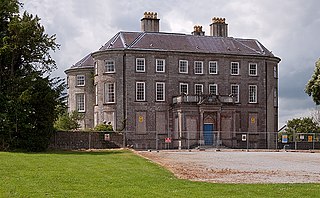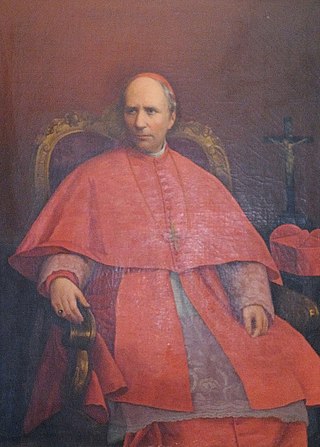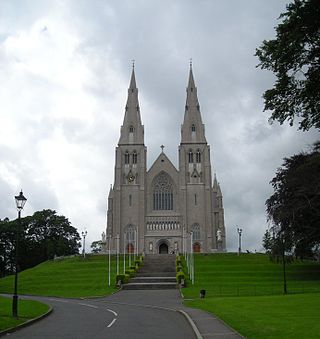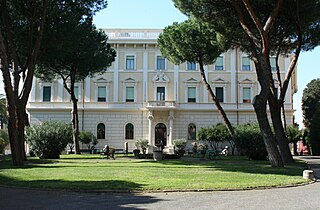Life
Creagh was educated at the Jesuit college in Poitiers and in 1660 went on to the Pontifical Irish College in Rome, where was awarded a doctorate. [2] He was ordained priest in February 1666, served on the mission in Ireland for three years, and then became the agent of the Irish bishops in Rome. [2] He spoke Italian, Latin, French, English, and Irish. In 1671 Oliver Plunkett described him as of average height with a long oval face and reddish brown hair and beard. [2]
Creagh was consecrated Bishop of Cork and Cloyne on 27 May 1676 at the church of St Isidore in Rome. [2] During the Popish Plot scare orchestrated by Titus Oates he was arrested in March 1680 and spent two years in prison on suspicion of conspiring to murder Charles II of England, before being acquitted in August 1682. [3] During the trial the courthouse roof collapsed on his accusers, narrowly missing the judge, but leaving Creagh unscathed. [2]
He left Ireland after the defeat of James II of England in 1690. [4] In 1693 he was translated to the Archbishopric of Dublin on the recommendation of King James, but he was never able to return to Ireland to claim the see. He became Coadjutor Bishop of Strasbourg, where he died on 25 July 1705. [3]

James Ussher was the Church of Ireland Archbishop of Armagh and Primate of All Ireland between 1625 and 1656. He was a prolific scholar and church leader, who today is most famous for his identification of the genuine letters of the church father, Ignatius of Antioch, and for his chronology that sought to establish the time and date of the creation as "the entrance of the night preceding the 23rd day of October... the year before Christ 4004"; that is, around 6 pm on 22 October 4004 BC, per the proleptic Julian calendar.

Sir William St LegerPC (Ire) (1586–1642) was an Anglo-Irish landowner, administrator and soldier, who began his military career in the Eighty Years' War against Habsburg Spain. He settled in Ireland in 1624, where he was MP for County Cork in two Irish parliaments and Lord President of Munster. During the Irish Rebellion of 1641, he played a leading part in suppressing the rising in Munster before dying in 1642.

Luke Wadding, O.F.M., was an Irish Franciscan friar and historian.

Oliver Plunkett was the Catholic Archbishop of Armagh and Primate of All Ireland and the last victim of the Popish Plot. He was beatified in 1920 and canonised in 1975, thus becoming the first new Irish saint in almost seven hundred years.

Paul Cardinal Cullen was Roman Catholic Archbishop of Dublin and previously of Armagh, and the first Irish cardinal. His Ultramontanism spearheaded the Romanisation of the Catholic Church in Ireland and ushered in the devotional revolution experienced in Ireland through the second half of the 19th century and much of the 20th century. A trained biblical theologian and scholar of ancient languages, Cullen crafted the formula for papal infallibility at the First Vatican Council.
Peter Talbot was the Roman Catholic Archbishop of Dublin from 1669 to his death in prison. He was a victim of the Popish Plot.
George Errington (1804–1886), the second son of Thomas Errington and Katherine (Dowdall) of Clints Hall, Richmond, Yorkshire, was a Roman Catholic churchman.

The Archdiocese of Armagh is a Latin ecclesiastical territory or archdiocese of the Catholic Church located in the northern part of Ireland. The ordinary is the Roman Catholic Archbishop of Armagh who is also the Metropolitan of the Ecclesiastical province of Armagh and the Primate of All Ireland. The mother church is St Patrick's Cathedral. The claim of the archdiocese to pre-eminence in Ireland as the primatial see rests upon its traditional establishment by Saint Patrick circa 445. It was recognised as a metropolitan province in 1152 by the Synod of Kells.

Irish Catholic Martyrs were 24 Irish men and women who have been beatified or canonized for dying for their Catholic faith between 1537 and 1681 in Ireland. The canonisation of Oliver Plunkett in 1975 brought an awareness of the others who died for the Catholic faith in the 16th and 17th centuries. On 22 September 1992 Pope John Paul II proclaimed a representative group from Ireland as martyrs and beatified them.
William Maziere Brady (1825–1894) was an Irish priest, ecclesiastical historian and journalist who converted to Roman Catholicism from Anglicanism.
Richard Creagh was an Irish Roman Catholic clergyman who was the Archbishop of Armagh and Primate of All Ireland in the second half of the sixteenth century.
John Lanigan was an Irish historian. Born in County Tipperary, he studied at the Irish College in Rome. He was a professor at the University of Pavia, where he earned a Doctor of Divinity degree. When Napoleon's army took the city, he lost most of his possessions, and returned to Ireland destitute. Lanigan found difficulty obtaining a clerical appointment due to suspicions of having Jansenist sympathies. He became sub-librarian at the Royal Dublin Society and was involved in the literary life of the city.

The Pontifical Irish College is a Catholic seminary in Rome for the training and education of priests. The College is located at #1, Via dei Santi Quattro, and serves as a residence for clerical students from all over the world. Designated a pontifical college in 1948, it is the last Irish College in continental Europe.

Justin McCarthy, 1st Viscount Mountcashel, PC (Ire), was a Jacobite general in the Williamite War in Ireland and a personal friend of James II. He commanded Irish Army troops during the conflict, enjoying initial success when he seized Bandon in County Cork in 1689. However, he was defeated and captured at the Battle of Newtownbutler later in the same year. He escaped and was accused of having broken parole. After the end of the war, he led an Irish Brigade overseas for service in the French Army. He died in French exile.

Michael Verdon was the 2nd Catholic Bishop of Dunedin from (1896–1918).
Peter James Kenney (1779–1841) was an Irish Jesuit priest. He founded Clongowes Wood College and was also rector of the Jesuits in Ireland. A gifted administrator, Kenney made two trips to the United States, where he established Maryland as a vice-province and set up Missouri as a separate Jesuit mission.
David Wolfe was an Irish Jesuit who became papal legate in Ireland.
Richard Tenison was an Irish bishop of Killala, Clogher and Meath.
James Dowley was an Irish Roman Catholic prelate who served as the Bishop of Limerick from 1720 to 1737.

John Baptist Sleyne was Roman Catholic Bishop of Cork and Cloyne and Apostolic Administrator of the diocese of Ross, who was an enthusiastic patron of the Gaelic language and culture, and an advocate of the severely repressed Roman Catholic population, in Ireland during the early period of the Penal Laws. He was one of only two bishops to minister in Ireland at the end of the 17th century. Sleyne was very learned in languages and moral theology, and had traveled widely. He was known to and had interactions with kings, queens, popes and wider cultural and religious establishment throughout Ireland and Europe. Because Sleyne "remain[ed] in the kingdom contrary to the [penal] law", of the time, he went into hiding. He was eventually brought before the courts in 1698 and spent five years in prison in Cork Gaol. During his time as Bishop, both as fugitive and prisoner, Sleyne ordained many priests and consecrated several bishops in Ireland. He was eventually exiled to Portugal, on 11 February 1703, where he was given shelter in the Irish Dominican Convento do Bom Sucesso, Lisbon. He died in Portugal on 16 February 1712, aged 74 years and is buried at the altar of the Sacred Heart in the Church of Nossa Senhora do Bom Sucesso.
 Herbermann, Charles, ed. (1913). "Richard Creagh". Catholic Encyclopedia . New York: Robert Appleton Company.
Herbermann, Charles, ed. (1913). "Richard Creagh". Catholic Encyclopedia . New York: Robert Appleton Company.









